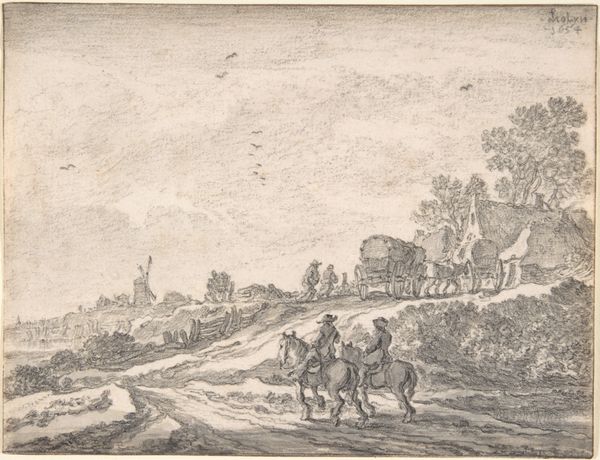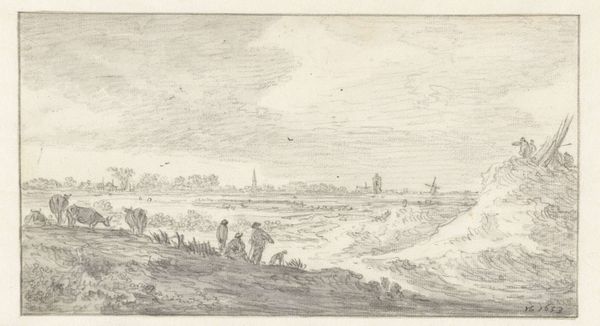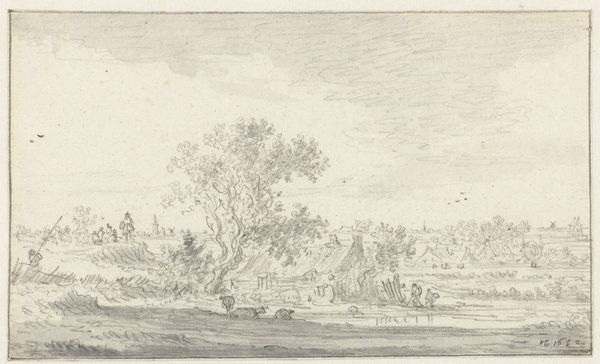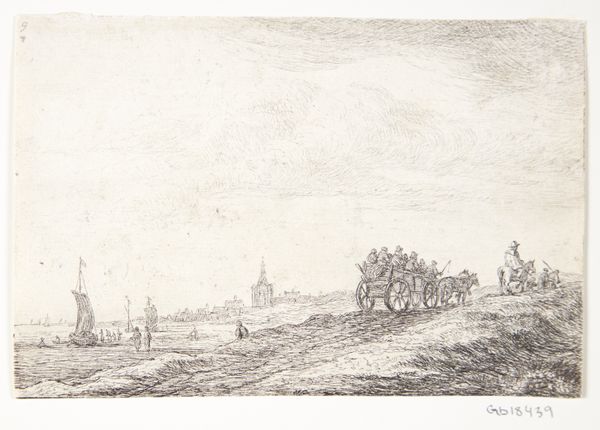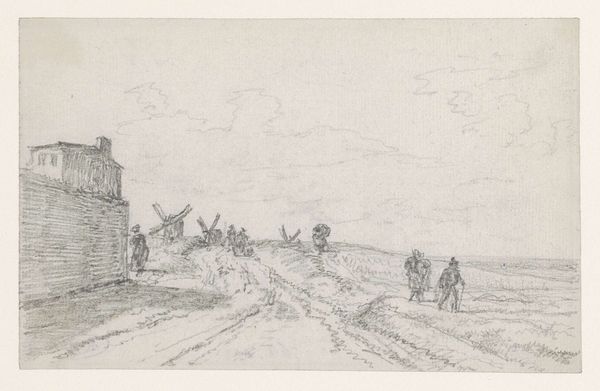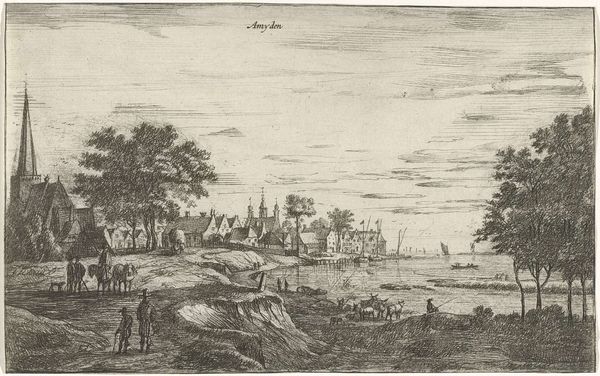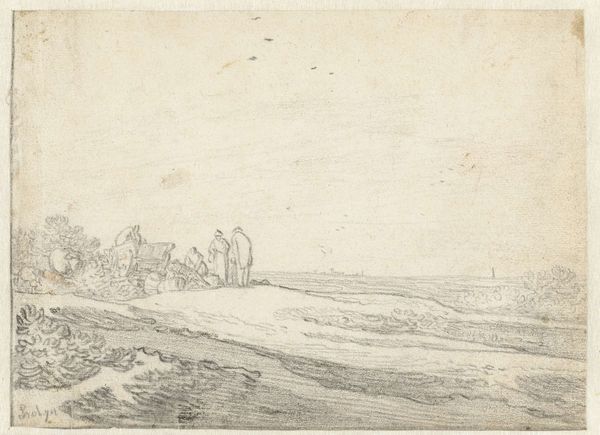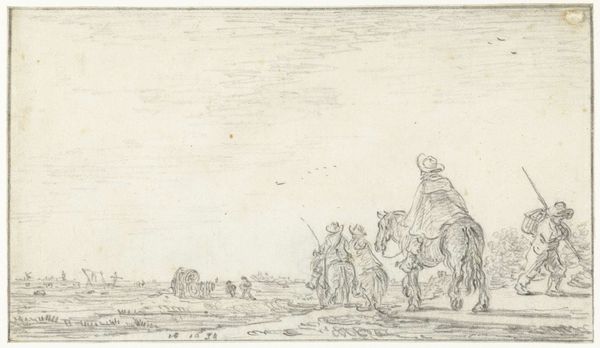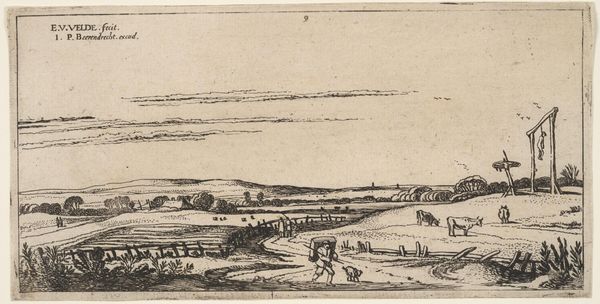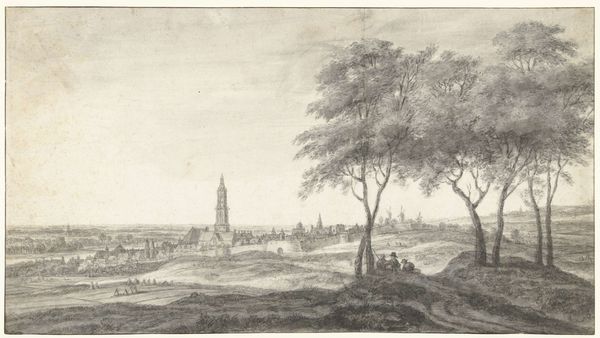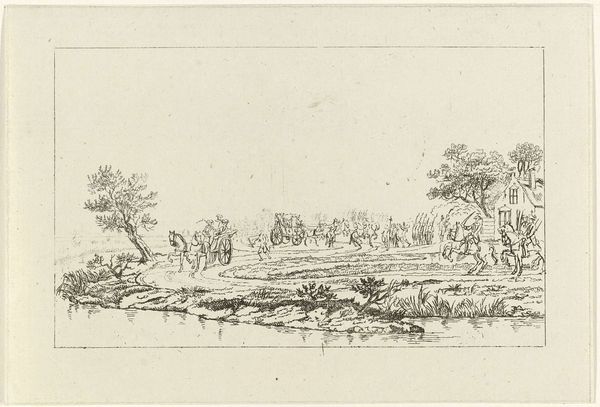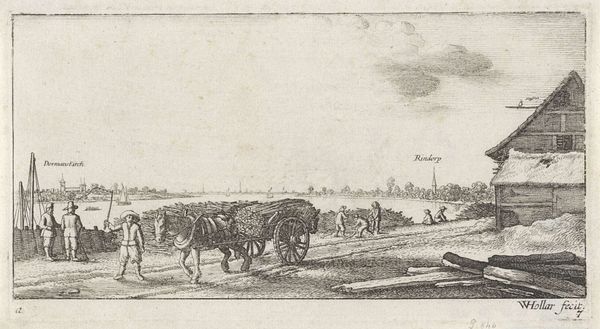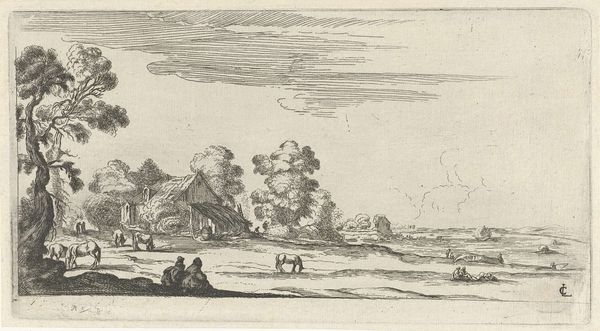
drawing, etching, paper, ink
#
drawing
#
dutch-golden-age
#
etching
#
landscape
#
paper
#
ink
#
horse
#
genre-painting
#
sea
Dimensions: height 98 mm, width 142 mm
Copyright: Rijks Museum: Open Domain
Curator: This is "Coastline with Horse and Carriage," created between 1630 and 1663 by Anthonie Waterloo. The work, now housed at the Rijksmuseum, is a drawing executed with etching, ink, and paper. Editor: It's incredibly detailed for such a small work; you can practically feel the dampness of the air and hear the waves. Curator: Absolutely. Waterloo captured everyday life during the Dutch Golden Age. Genre painting became increasingly popular at this time, depicting ordinary people in familiar landscapes. What social dynamics can we observe? Who had the luxury of travelling in such carriages? Editor: Thinking about the materiality, the relative ease of etching—multiple prints, accessibility, affordability. This image could circulate. These depictions of seaside towns were in greater circulation thanks to these printing techniques, forming and reforming the national consciousness. How did this representation feed into an image of Dutch prosperity and power? Curator: Exactly, consider also how the coastal scene ties into larger issues of Dutch identity and power. The sea was not just a resource or a picturesque backdrop, it was also a site of intense economic activity related to colonial ventures, even though those aspects remain invisible here. We must always consider who is absent and why, right? Who doesn’t appear in these "everyday scenes?" Editor: It's tempting to get lost in the picturesque details but keeping in mind the historical context allows us to go a little bit beyond what we see at face value. Who paid for that lifestyle? And what sort of labor relations made these materials so cheap? How do global issues such as race and colonialism shape these works? Curator: Yes. And through considering this etching from a more materialist position we can start to question and undermine that established view of the world as shown within this artwork. Editor: And, through the lens of a cultural studies framework we can see what isn’t shown!
Comments
No comments
Be the first to comment and join the conversation on the ultimate creative platform.
